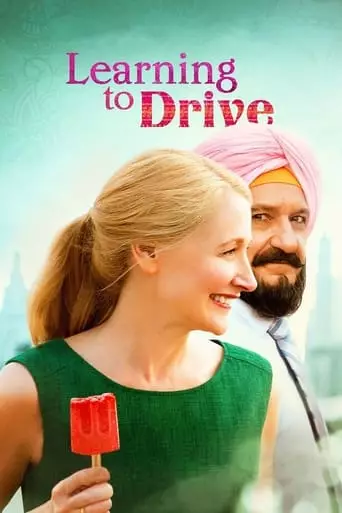As her marriage dissolves, a Manhattan writer takes driving lessons from a Sikh instructor with marriage troubles of his own. In each other’s company they find the courage to get back on the road and the strength to take the wheel.
Learning to Drive is a 2014 American comedy-drama directed by Isabel Coixet, featuring Patricia Clarkson as Wendy, a successful New York book critic, and Ben Kingsley as Darwan, a Sikh driving instructor. The narrative unfolds as Wendy’s 21-year marriage to her husband, Ted (Jake Weber), disintegrates due to his infidelity. Facing the necessity to drive for the first time in her life, Wendy enrolls in driving lessons with Darwan. Through their interactions, the film explores themes of personal growth, cultural exchange, and the complexities of human relationships.
Main Themes
- Personal Transformation and Self-Discovery: The film delves into Wendy’s journey of self-discovery following her divorce. Learning to drive becomes a metaphor for her broader quest for independence and self-reliance. This theme underscores the challenges and rewards of embracing change and personal growth.
- Cultural Exchange and Understanding: Wendy and Darwan come from distinct cultural backgrounds, yet their interactions foster mutual respect and understanding. The film highlights the richness that cultural exchange brings to personal relationships, emphasizing the importance of empathy and open-mindedness.
- Healing and Emotional Support: Both characters are navigating personal upheavals—Wendy with her divorce and Darwan with his arranged marriage. Their evolving friendship provides emotional support, illustrating the healing power of human connection and the significance of companionship during challenging times.
- Independence and Empowerment: Wendy’s decision to learn to drive symbolizes her reclaiming control over her life. The film portrays her empowerment as she steps out of her comfort zone, confronting fears and uncertainties, thereby embracing her autonomy.
Impact of the Movie
Learning to Drive received generally positive reviews from critics. On Rotten Tomatoes, it holds an approval rating of 67% based on reviews from 102 critics, with an average rating of 6.1/10. The consensus states: The story’s a bit predictable, but Learning to Drive is elevated by typically strong work from stars Patricia Clarkson and Ben Kingsley.
On Metacritic, the film has a score of 59 out of 100, based on reviews from 24 critics, indicating mixed or average reviews.
Critics particularly praised the performances of Clarkson and Kingsley, noting their chemistry and the depth they brought to their respective roles. However, some critiques mentioned that the film’s pacing was slow and its narrative somewhat predictable. Despite these critiques, the film was named first-runner up for the People’s Choice Award at the 2014 Toronto International Film Festival, indicating a positive reception from audiences.
7 Reasons to Watch Learning to Drive (2014)
- Compelling Performances: Patricia Clarkson and Ben Kingsley deliver nuanced and heartfelt performances, bringing depth to their characters. Their chemistry is palpable, making their evolving friendship both believable and engaging.
- Cultural Exploration: The film offers an insightful look into Sikh culture through Darwan’s character, providing viewers with a perspective that is often underrepresented in mainstream cinema. This cultural exploration enriches the narrative and broadens the audience’s understanding.
- Emotional Depth: Learning to Drive delves into the complexities of human emotions, portraying the characters’ vulnerabilities and growth. The film’s exploration of personal transformation and healing resonates on a deep emotional level.
- Engaging Dialogue: The screenplay is rich with witty and poignant dialogue that captures the essence of the characters’ personalities and their evolving relationship. The conversations during the driving lessons are particularly engaging, offering both humor and insight.
- Thought-Provoking Themes: The film tackles themes of independence, cultural understanding, and personal growth, encouraging viewers to reflect on their own lives and relationships. Its exploration of these themes adds depth and substance to the narrative.
- Realistic Portrayal of Relationships: The film presents a realistic depiction of relationships, focusing on the nuances of human connection and the challenges of personal transformation. This authenticity makes the characters’ journeys relatable and impactful.
- Cinematic Quality: Directed by Isabel Coixet, the film boasts high production values, with a well-crafted narrative and strong direction that keeps the audience engaged throughout. The pacing and cinematography complement the story, enhancing the overall viewing experience.
How Will You Feel After Watching Learning to Drive (2014)?
After watching Learning to Drive, you may feel a sense of warmth and introspection. The film’s exploration of personal growth and human connection can evoke feelings of empathy and understanding. The characters’ journeys toward healing and self-discovery may inspire you to reflect on your own experiences and relationships. Overall, the film offers a heartfelt and engaging narrative that leaves a lasting impression, encouraging viewers to appreciate the complexities of human connections and the transformative power of change.

